Are you looking for information about famous scientists and innovators in Science, Technology, Engineering and Math for Black History Month? Students from our 4-H Agri-Science in the City clubs learn annually about the impacts made during Black History Month.
Check out just a few of our highlighted leaders.
For the entire presentation click here.

Patricia Bath�(November 4, 1942)
Among many firsts, Patricia Bath is the first African American to complete a residency in ophthalmology and the first African-American
female doctor to receive a medical patent. She invented the Laserphaco Probe for cataract treatment in 1986.

Prof. Samuel Massie Jr. �(July 3, 1919 – April 10, 2005)�
An organic chemist who was the first African American to teach at the U.S. Naval Academy.
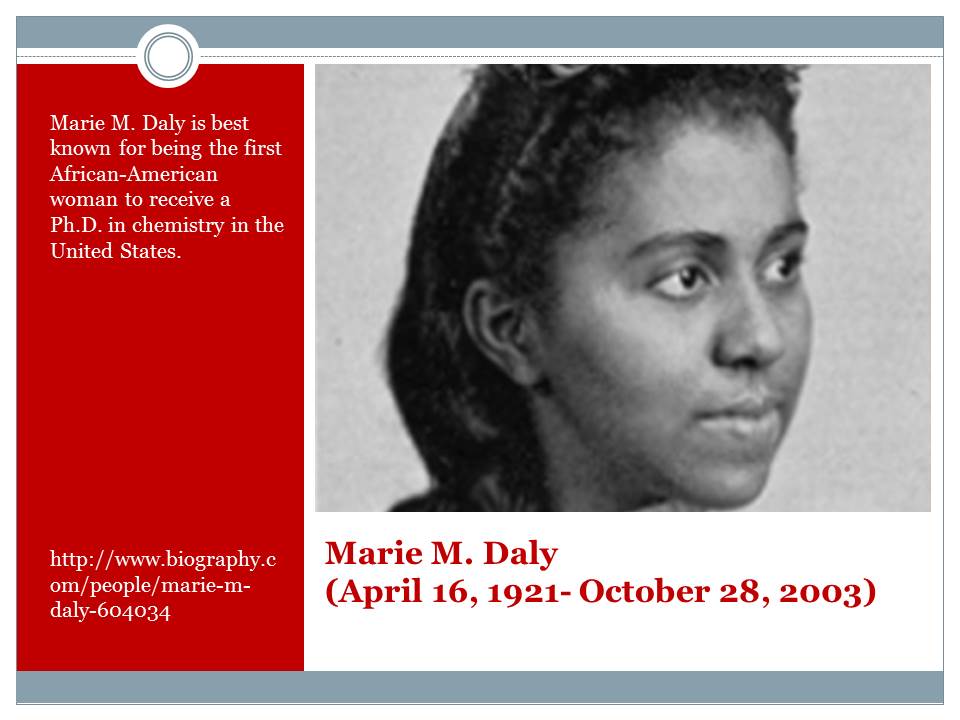
Marie M. Daly�(April 16, 1921- October 28, 2003)
Marie M. Daly is best known for being the first African-American woman to receive a Ph.D. in chemistry in the United States.

Philip Emeagwali �(born August 23, 1954)�
Nigerian-born scientist and inventor known for first using a Connection Machine supercomputer to help analyze petroleum fields.
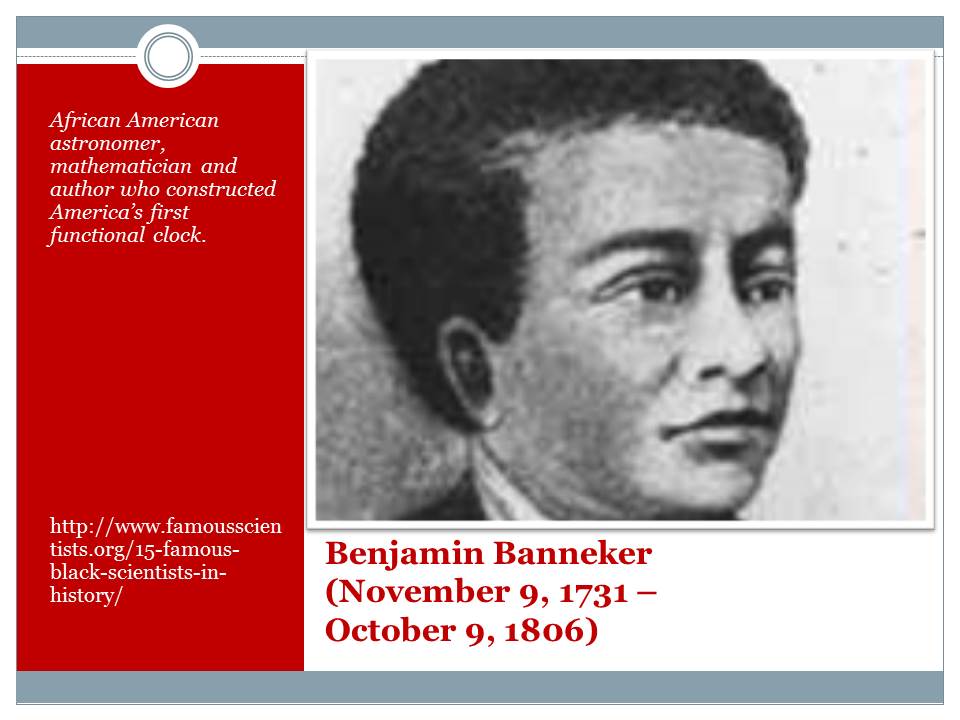
Benjamin Banneker �(November 9, 1731 – �October 9, 1806)
African American astronomer, mathematician and author who constructed America’s first functional clock.

Regina Benjamin�(October 26, 1956)
Physician Regina Benjamin worked as the 18th U.S. surgeon general, appointed by President Barack Obama in 2009.

Percy Lavon Julian �(April 11, 1899 – April 19, 1975)
African American researcher known for being a pioneer in the chemical synthesis of medicinal drugs from plants.

Madam C J Walker�(December 23, 1867- May 25, 1919)
Madam C.J. Walker, born Sarah Breedlove, created specialized hair products for African-American hair and was one of the first American
women to become a self-made millionaire.

Norbert Rillieux �(March 17, 1806 – October 8, 1894)
American inventor and engineer, best remembered for his invention of the multiple-effect evaporator.

Charles Drew �(June 3, 1904 – �April 1, 1950)
American physician, surgeon and medical researcher known as the inventor of the blood bank.

Mae C. Jemison�(October 17, 1956)
Mae C. Jemison is the first African-American female astronaut. In 1992, she flew into space aboard the Endeavour, becoming the first
African-American woman in space.
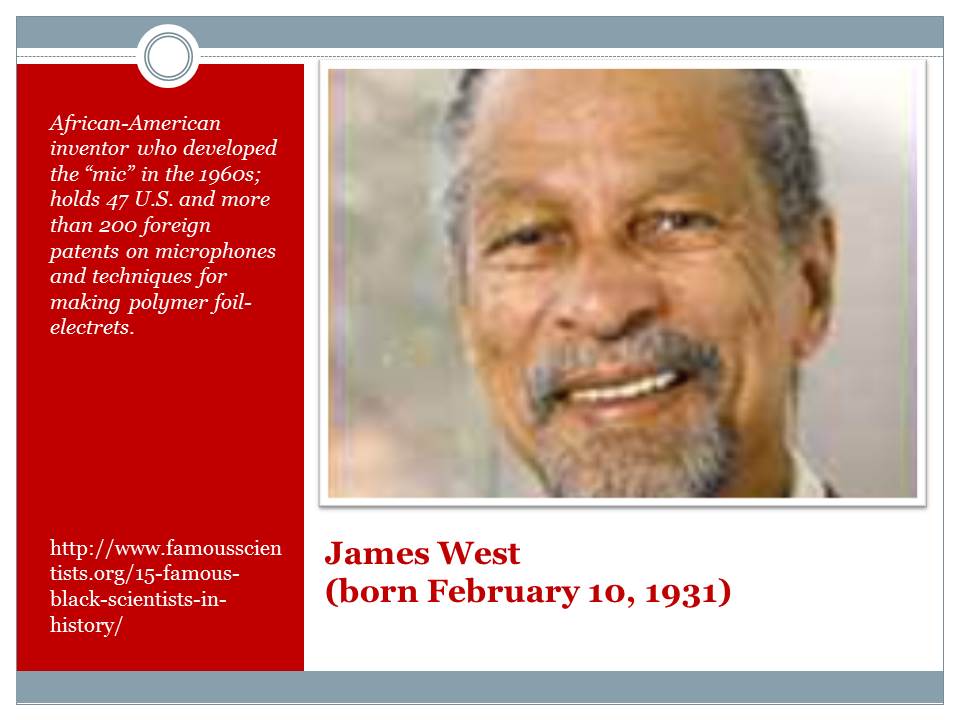
James West �(born February 10, 1931)�
African-American inventor who developed the “mic” in the 1960s; holds 47 U.S. and more than 200 foreign patents on microphones and techniques for making polymer foil-electrets.

Mary Mahoney�(May 7, 1845- January 4, 1926)
Mary Mahoney became the first black woman to complete nurse’s training in 1879.

George Washington Carver �(January 1864 – January 5, 1943)
American scientist and inventor and an extraordinary explorer and innovator of agricultural science.

Dr. Daniel Hale Williams �(January 18, 1858 – August 4, 1931)
African American physician who performed the first prototype open-heart surgery.

Mary Styles Harris�(June 26, 1949)
Distinguished American health researcher Mary Styles Harris has gained national attention for her work and influence on
national health policies.

Garrett Morgan �(March 4, 1877 – August 27, 1963)
African American inventor who made both the first traffic signal invention and the first patented gas mask.

Alexa Canady�(November 7, 1950)
In 1981, Alexa Canady became the first female African-American neurosurgeon in the United States.
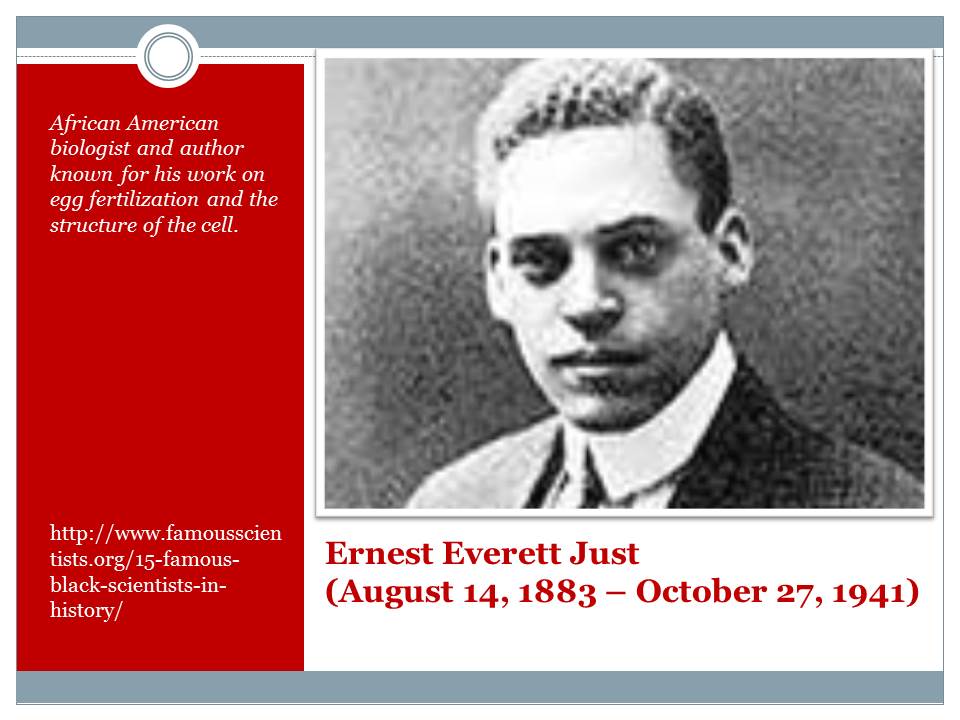
Ernest Everett Just �(August 14, 1883 – October 27, 1941)
African American biologist and author known for his work on egg fertilization and the structure of the cell.
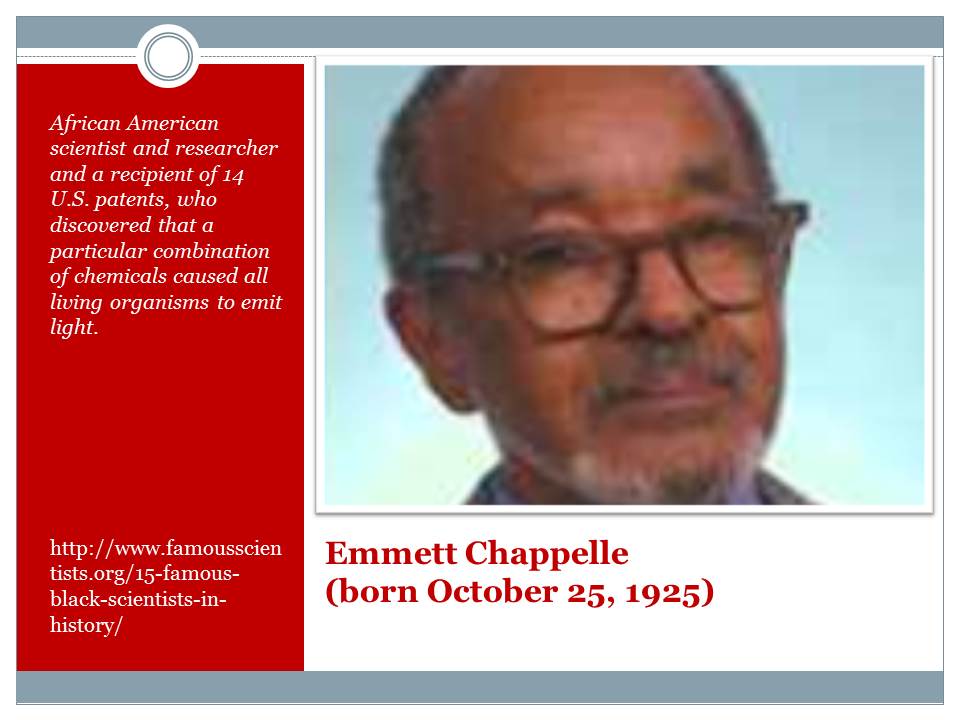
Emmett Chappelle �(born October 25, 1925)
African American scientist and researcher and a recipient of 14 U.S. patents, who discovered that a particular combination of chemicals
caused all living organisms to emit light.

Nia Wordlaw
“My mom came home one day with an article from 1922 about Bessie Coleman. [That] was my first mentor: an article about [the first]
black female pilot,” says Wordlaw, a pilot for United Airlines—one of very few female African- Americans to fly for a major carrier. “It
makes a difference to see someone who looks like you doing something that you want to do.“
For the entire presentation click here.
























